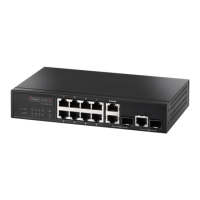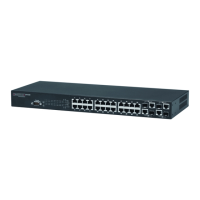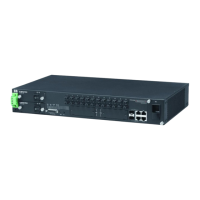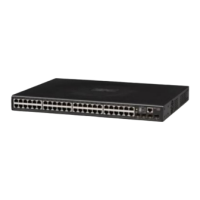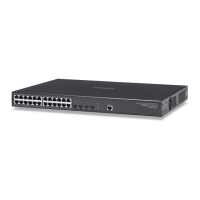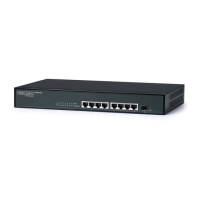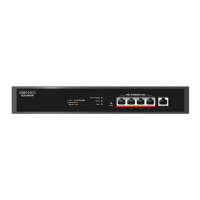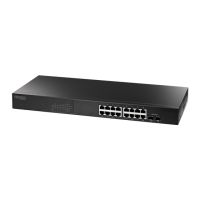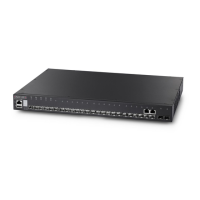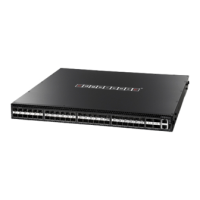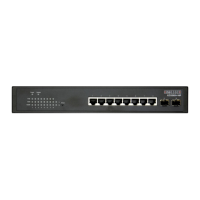C
HAPTER
19
| Using the Command Line Interface
CLI Command Groups
– 496 –
CLI COMMAND GROUPS
The system commands can be broken down into the functional groups
shown below
.
Table 38: Command Group Index
Command Group Description Page
General Basic commands for entering privileged access mode,
restarting the system, or quitting the CLI
499
System Management Display and setting of system information, basic modes
of operation, maximum frame size, file management,
console port and telnet settings, system logs, SMTP
alerts, the system clock, and switch clustering
507
Simple Network
Management Protocol
Activates authentication failure traps; configures
community access strings, and trap receivers
569
Remote Monitoring Supports statistics, history, alarm and event groups 589
User Authentication Configures user names and passwords, logon access
using local or remote authentication, management
access through the web server, Telnet server and
Secure Shell; as well as port security, IEEE 802.1X port
access control, and restricted access based on
specified IP addresses
597
General Security
Measures
Segregates traffic for clients attached to common data
ports; and prevents unauthorized access by
configuring valid static or dynamic addresses, web
authentication, MAC address authentication, filtering
DHCP requests and replies, and discarding invalid ARP
responses
651
Access Control List Provides filtering for IPv4 frames (based on address,
protocol, TCP/UDP port number or TCP control code),
IPv6 frames (based on address, DSCP traffic class, or
next header), or non-IP frames (based on MAC address
or Ethernet type)
697
Interface Configures the connection parameters for all Ethernet
ports, aggregated links, and VLANs
719
Link Aggregation Statically groups multiple ports into a single logical
trunk; configures Link Aggregation Control Protocol for
port trunks
739
Mirror Port Mirrors data to another port for analysis without
affecting the data passing through or the performance
of the monitored port
751
Rate Limit Controls the maximum rate for traffic transmitted or
received on a port
761
Automatic Traffic Control Configures bounding thresholds for broadcast and
multicast storms which can be used to trigger configured
rate limits or to shut down a port
763
Address Table Configures the address table for filtering specified
addresses, displays current entries, clears the table, or
sets the aging time
777
Spanning Tree Configures Spanning Tree settings for the switch 783
ERPS Configures Ethernet Ring Protection Switching for
increased availability of Ethernet rings commonly used in
service provider networks
811
VLANs Configures VLAN settings, and defines port membership
for VLAN groups; also enables or configures private
VLANs, protocol VLANs, voice VLANs, and QinQ tunneling
825
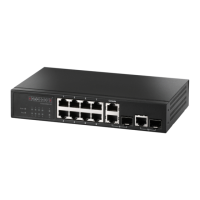
